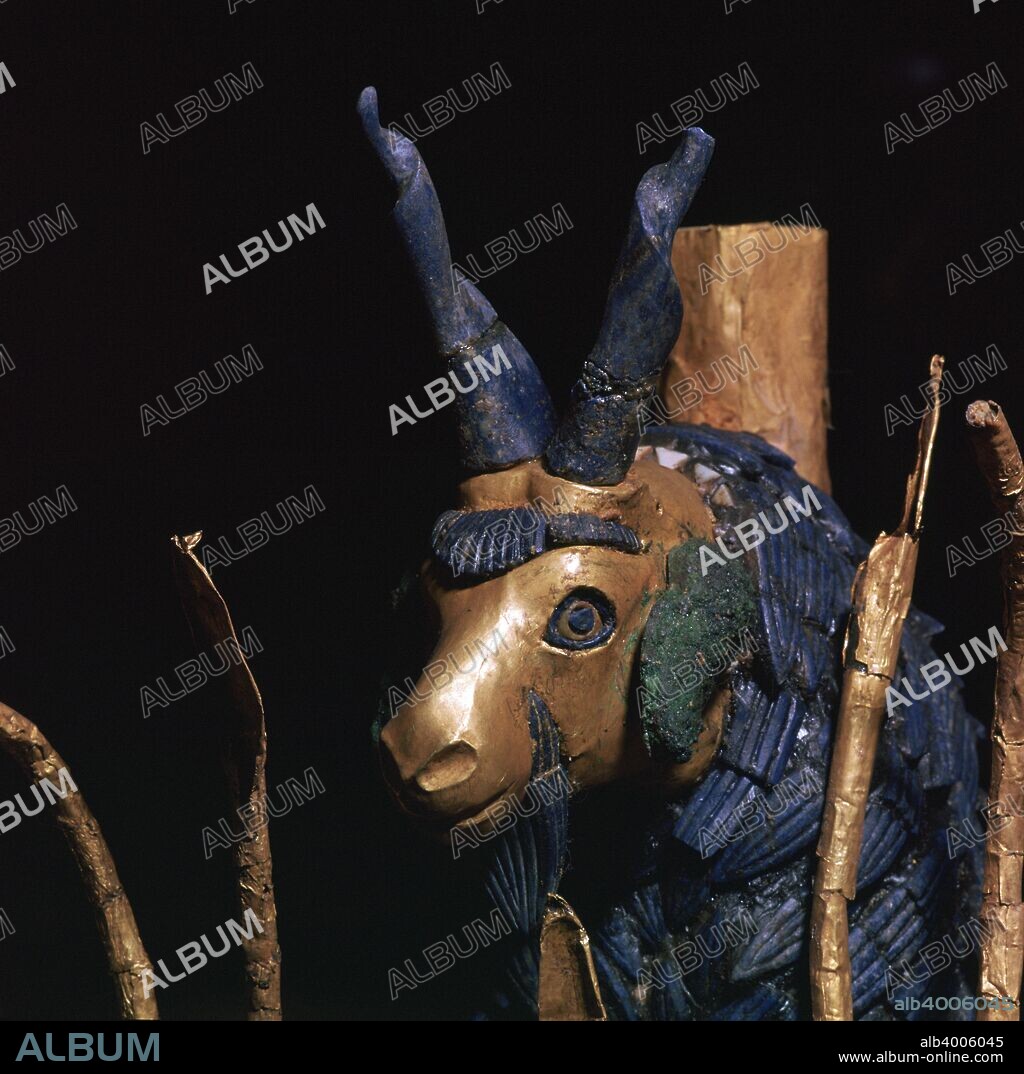alb4006045
The 'Ram in a Thicket', from Ur, southern Iraq, c2600-c2400 BC. Artist: Unknown

|
Add to another lightbox |
|
Add to another lightbox |



Title:
The 'Ram in a Thicket', from Ur, southern Iraq, c2600-c2400 BC. Artist: Unknown
Caption:
Detail of the 'Ram in a Thicket', from Ur, southern Iraq, c2600-c2400 BC. One of an almost identical pair discovered by Leonard Woolley in the 'Great Death Pit', one of the Royal Graves in the cemetery at Ur. It was named by Woolley after the biblical reference in Genesis 22:13; God ordered Abraham to sacrifice his son Isaac, but at the last moment 'Abraham lifted up his eyes, and looked, and behold behind him a ram caught in a thicket by his horns: and Abraham went and took the ram, and offered him up for a burnt offering in the stead of his son'. The 'ram' is more accurately described as a goat. From the British Museum's collection
Credit:
Album / CM Dixon / Heritage Images
Releases:
Model: No - Property: No
Rights questions?
Rights questions?
Image size:
4208 x 4196 px | 50.5 MB
Print size:
35.6 x 35.5 cm | 14.0 x 14.0 in (300 dpi)
Keywords:
ABRAHAM • ANCIENT CITY • ANIMAL • ANT. OR.: UR, MESOPOTAMIA • ARCHAEOLOGICAL • ARCHAEOLOGY • ARTEFACT • ARTIFACT • BIBLE • BRITISH MUSEUM • BURIAL • CEMETERY: UR, MESOPOTAMIA (IRAQ) • CHARLES LEONARD WOOLLEY • CHARLES LEONARD • CHRISTIANISM • CHRISTIANITY • CITY • COLOR • COLOUR • CONCEPT • COUNTRY • CRISTIANDAD • CRISTIANISMO • DEATH • EARTHWORK • EXCAVATION • EXCAVATIONS • FLEECE • GOAT • GOATS • GOLD • GRAVE • GREAT DEATH PIT • GROUNDWORK • HORN • IRAQ • ISAAC • LAPIS LAZULI • LOCATION • MESOPOTAMIA: UR • MUSEUM • NAVVYING • OBJECT • OBJECTS • OLD TESTAMENT • PEOPLE • RAM • RELIGION • RELIGIOUS • ROYAL • ROYALTY • SHEEP • SIR CHARLES LEONARD WOOLLEY • SIR CHARLES LEONARD • THICKET • UMBRELLA • UR • UR, MESOPOTAMIA • WOOLLEY
 Pinterest
Pinterest Twitter
Twitter Facebook
Facebook Copy link
Copy link Email
Email

